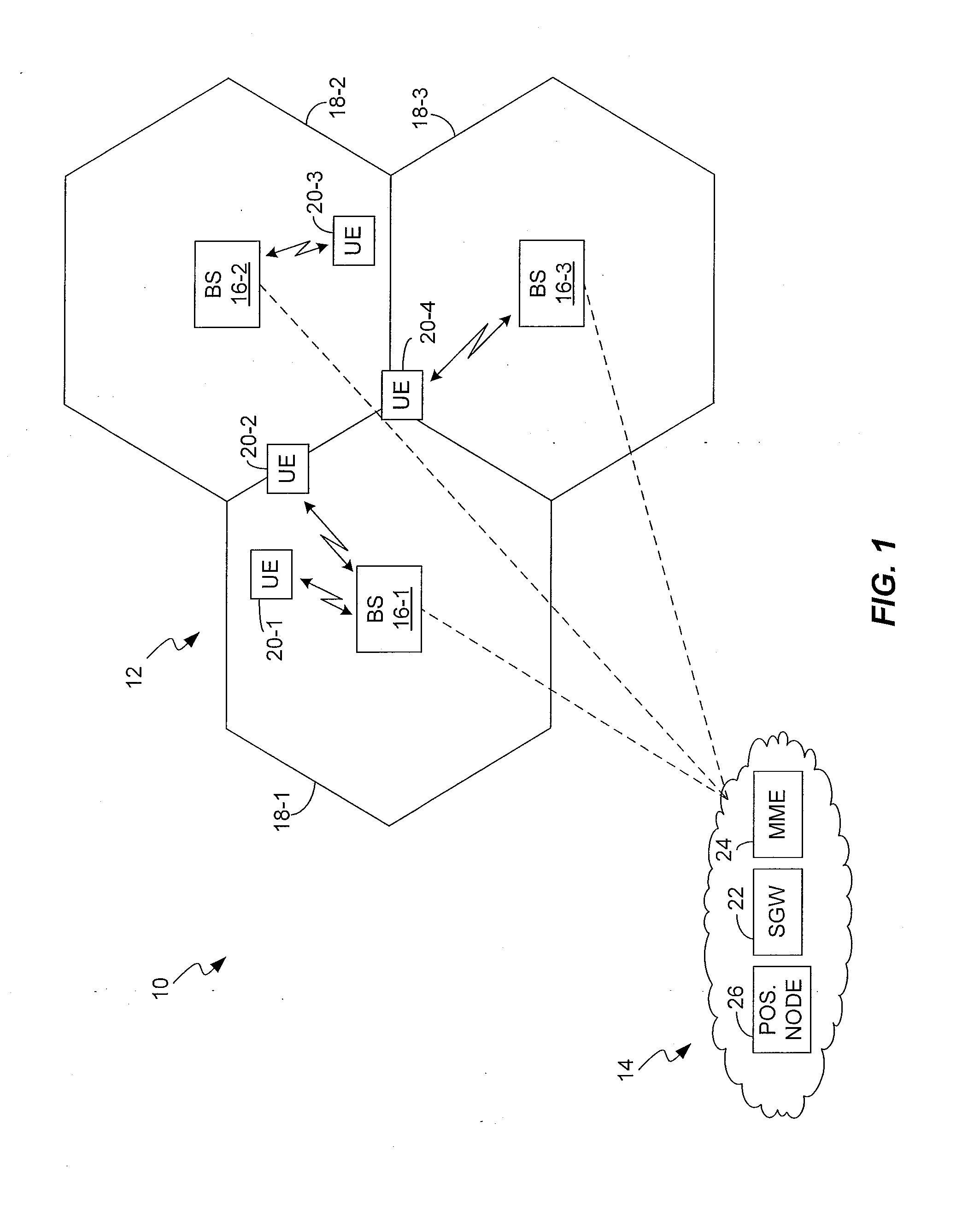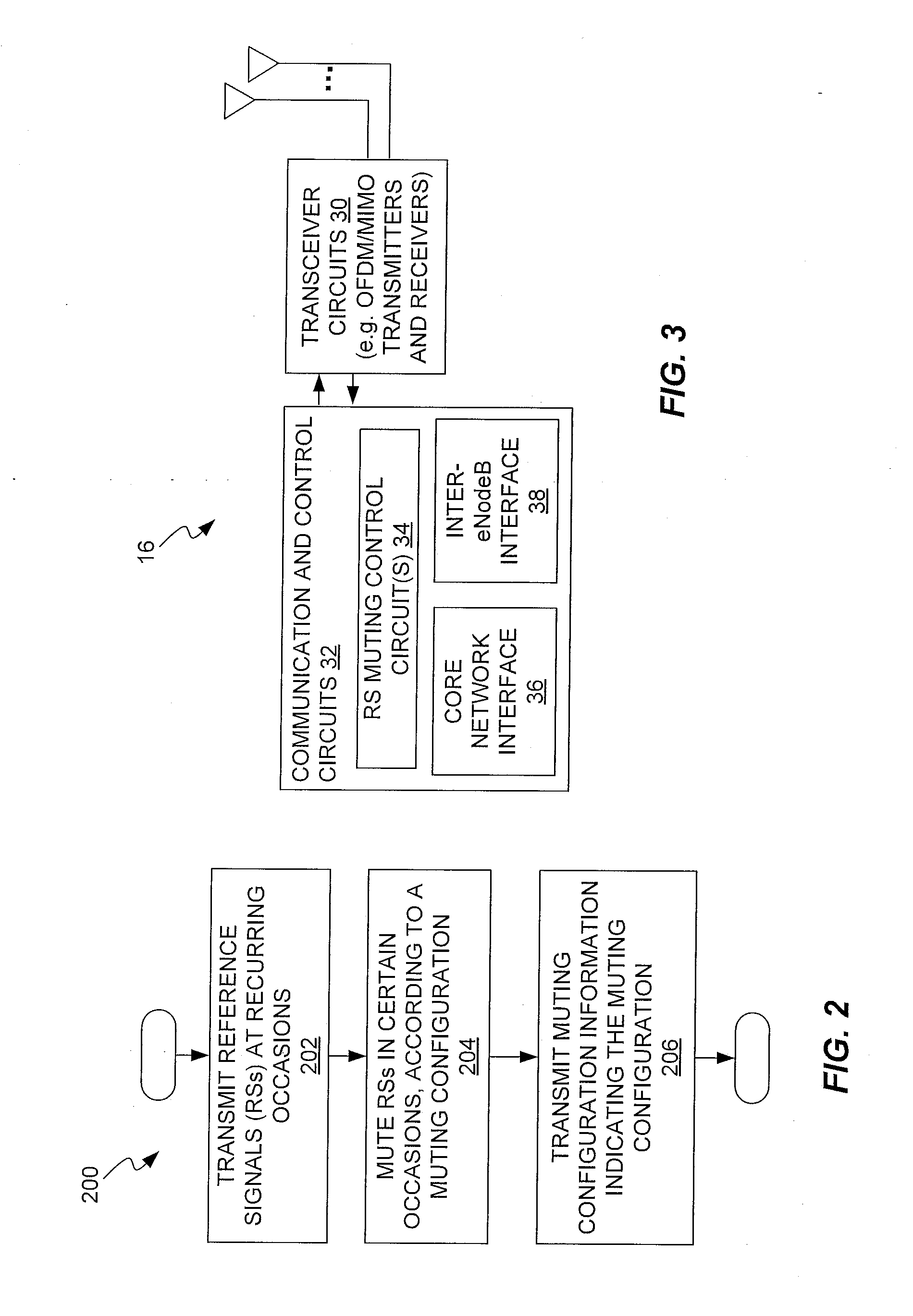Method and Apparatus for Muting Signaling in a Wireless Communication Network
a wireless communication network and signaling technology, applied in the direction of wireless communication, transmission path sub-channel allocation, instruments, etc., can solve the problems of increasing the processing resources and the time needed for prs measurement, gps or a-gps receivers may not necessarily be available in all wireless terminals, and the failure rate of gps is known to be high in indoor environments and urban canyons
- Summary
- Abstract
- Description
- Claims
- Application Information
AI Technical Summary
Benefits of technology
Problems solved by technology
Method used
Image
Examples
Embodiment Construction
As a non-limiting example, FIG. 1 illustrates one embodiment of a wireless communication network 10, which includes a Radio Access Network (RAN) 12 and an associated Core Network (CN) 14. The RAN 12 includes a number of base stations 16, e.g., BS 16-1, 16-2, and so on. Unless needed for clarity, the reference number 16 is used to refer to BSs 16 in both singular and plural senses. Each BS 16 provides one or more “cells”18, e.g., cell 18-1 corresponding to BS 16-1, cell 18-2 corresponding to BS 16-2, and so on. The cells 18 represent the radio service coverage provided by each BS 16, for supporting communications with user equipment 20, e.g., UE 20-1, UE 20-2, and so on.
Correspondingly, the CN 14 communicatively links the UEs 20 to each other and / or to communications equipment in other networks, such as the Internet, the PSTN, etc. To that end, the CN 14 includes a number of nodes or other functional entities. By way of simplified example, the illustrated CN 14 is depicted as includi...
PUM
 Login to View More
Login to View More Abstract
Description
Claims
Application Information
 Login to View More
Login to View More - R&D
- Intellectual Property
- Life Sciences
- Materials
- Tech Scout
- Unparalleled Data Quality
- Higher Quality Content
- 60% Fewer Hallucinations
Browse by: Latest US Patents, China's latest patents, Technical Efficacy Thesaurus, Application Domain, Technology Topic, Popular Technical Reports.
© 2025 PatSnap. All rights reserved.Legal|Privacy policy|Modern Slavery Act Transparency Statement|Sitemap|About US| Contact US: help@patsnap.com



